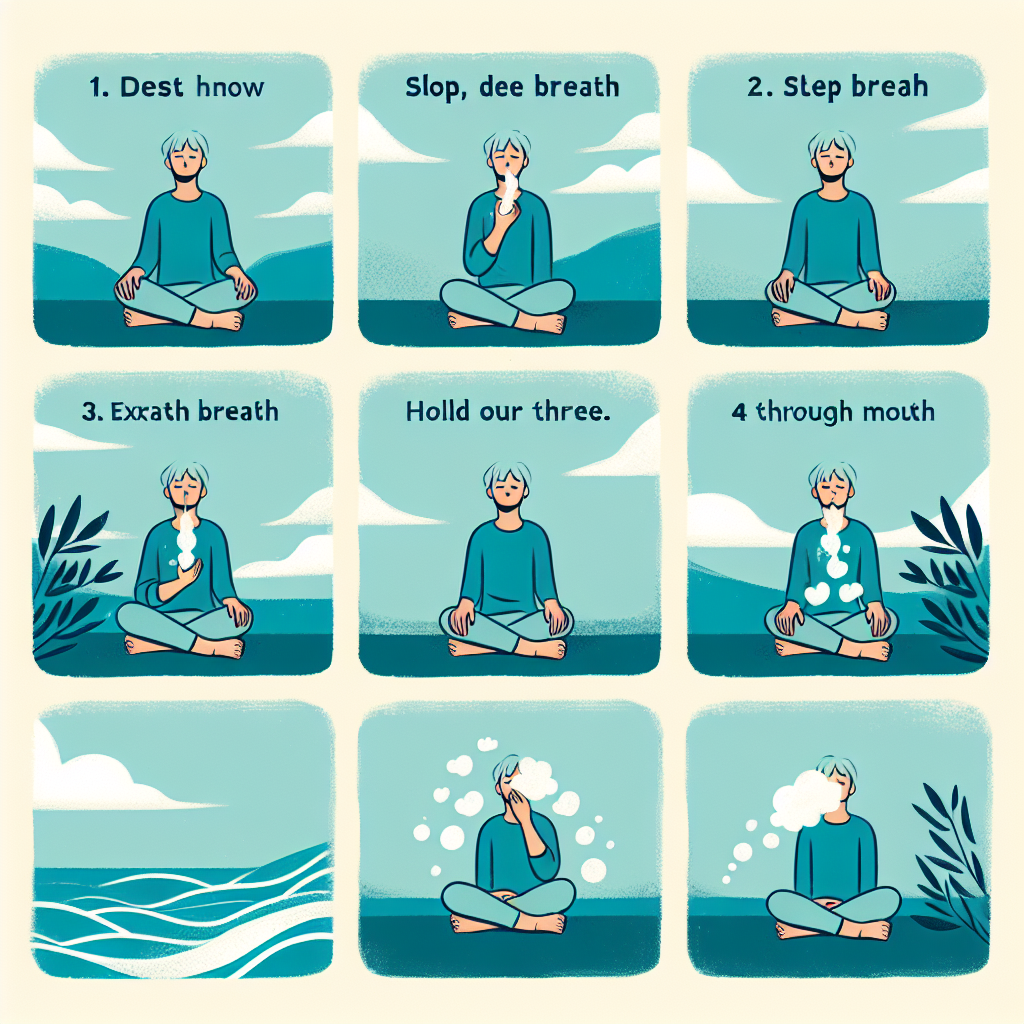
How to do deep breathing for relaxation
Understanding Deep Breathing Techniques
In our fast-paced lives, stress has become a common nemesis that affects our mental and physical well-being. Among various relaxation techniques, one that stands out for its simplicity and effectiveness is deep breathing. By focusing on our breath, we can tap into a powerful tool for relaxation and mindfulness. This article explores various aspects of deep breathing, including its benefits, techniques, and tips to enhance your practice.
The Science Behind Deep Breathing
Deep breathing, also known as diaphragmatic or abdominal breathing, involves fully engaging the diaphragm. This practice allows for a more efficient exchange of oxygen and carbon dioxide, which can have profound effects on the body and mind.
- Reduces stress and anxiety levels.
- Promotes relaxation response.
- Improves lung capacity and function.
- Supports better focus and clarity.
When we breathe deeply, we stimulate the vagus nerve, which activates the parasympathetic nervous system. This system is responsible for the 'rest and digest' response, countering the 'fight or flight' response that stress induces. Understanding how to do deep breathing for relaxation can therefore be a valuable skill for anyone looking to improve their mental health and overall quality of life.
Benefits of Deep Breathing
The benefits of deep breathing extend far beyond merely calming the mind. Here are some notable advantages:
- Stress Reduction: Deep breathing helps to lower cortisol levels, promoting a sense of calm and well-being.
- Improved Focus: Increased oxygen flow can enhance cognitive performance, leading to better concentration and productivity.
- Enhanced Emotional Regulation: Regular practice can help you manage your emotions more effectively, reducing feelings of anger and frustration.
- Physical Health Benefits: Improved oxygenation can support better heart health, digestion, and immune function.
- Greater Mindfulness: Focusing on the breath encourages present-moment awareness, enhancing overall mindfulness.
Common Misconceptions About Deep Breathing
Despite its benefits, there are several misconceptions surrounding deep breathing practices. It’s essential to clarify these to empower individuals to adopt this practice without hesitation:
- It’s Only for Yogis: Deep breathing is for everyone, regardless of their fitness level or experience with mindfulness practices.
- It Takes Too Much Time: Deep breathing can be done in just a few minutes, making it an accessible tool for busy lifestyles.
- It Doesn’t Work: Like any skill, deep breathing requires practice to experience its full benefits.
How to Practice Deep Breathing for Relaxation
Now that we understand the benefits, let’s delve into effective ways to practice deep breathing. Here’s a straightforward guide on how to do deep breathing for relaxation.
Basic Deep Breathing Technique
- Find a Comfortable Position: Sit or lie down in a quiet space where you won’t be disturbed.
- Close Your Eyes: This can help you focus better and eliminate distractions.
- Inhale Slowly: Breathe in deeply through your nose. Allow your abdomen to rise as your diaphragm inflates with air. Count to four as you inhale.
- Hold Your Breath: Pause for a moment while holding your breath. Count to four.
- Exhale Slowly: Release your breath through your mouth, counting to six as you exhale completely. Feel your stomach fall as you do this.
- Repeat: Continue this pattern for 5-10 minutes, focusing solely on your breath.
Guided Deep Breathing Exercises
For those who prefer guided practices, many apps and online resources offer structured sessions. Here are a few popular methods to explore:
- Apps: Headspace, Calm, and Insight Timer offer breath-focused meditations.
- YouTube: Search for deep breathing guided sessions to follow along.
- Local Classes: Yoga or meditation classes often include time for deep breathing.
Enhancing Your Deep Breathing Practice
To get the most out of your deep breathing practice, consider these tips:
- Create a Relaxing Environment: Ensure that your space is calm and free from distractions.
- Incorporate Aromatherapy: Essential oils can enhance relaxation. Consider lavender or chamomile scents.
- Use Music: Soft instrumental music can help you focus and create a peaceful atmosphere.
- Practice Regularly: Consistency is key. Incorporate deep breathing into your daily routine.
Combining Deep Breathing with Other Relaxation Techniques
For an even more profound relaxation experience, consider combining deep breathing with other techniques:
- Progressive Muscle Relaxation: Tense and then relax different muscle groups, pairing this with deep breathing.
- Visualization: Picture a peaceful scene while practicing deep breathing to enhance relaxation further.
- Mindfulness Meditation: Integrate breath awareness into mindfulness practices to create a more profound state of calm.
When to Use Deep Breathing
Deep breathing can be a beneficial practice in various situations. Here are some scenarios where it can be especially helpful:
- Before a presentation or public speaking engagement.
- While experiencing anxiety or panic attacks.
- During stressful work situations or deadlines.
- At bedtime to promote relaxation and better sleep.
Real-Life Applications
"Breathing is the link between your body and your mind." – Unknown
The beauty of deep breathing lies in its versatility. Here are a few success stories:
- Athletes: Many professional athletes use deep breathing techniques before competitions to center themselves and enhance performance.
- Students: Students often practice deep breathing during exams to alleviate test anxiety.
- Professionals: Busy professionals incorporate deep breathing during hectic workdays to regain focus and composure.
Conclusion
Deep breathing is a simple yet powerful tool that everyone can benefit from. Understanding how to do deep breathing for relaxation allows you to take control of stress, promote emotional balance, and enhance your overall well-being. With regular practice and the right techniques, you can harness the transformative power of your breath. So take a moment today to breathe deeply, find your calm, and embrace a more relaxed life.
By Guest, Published on August 23rd, 2024